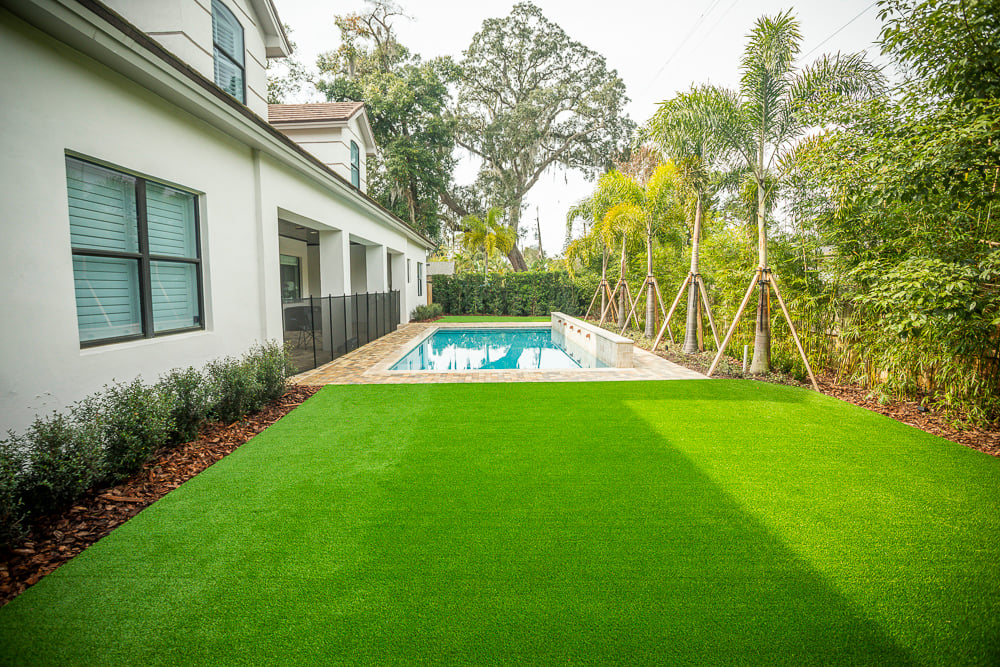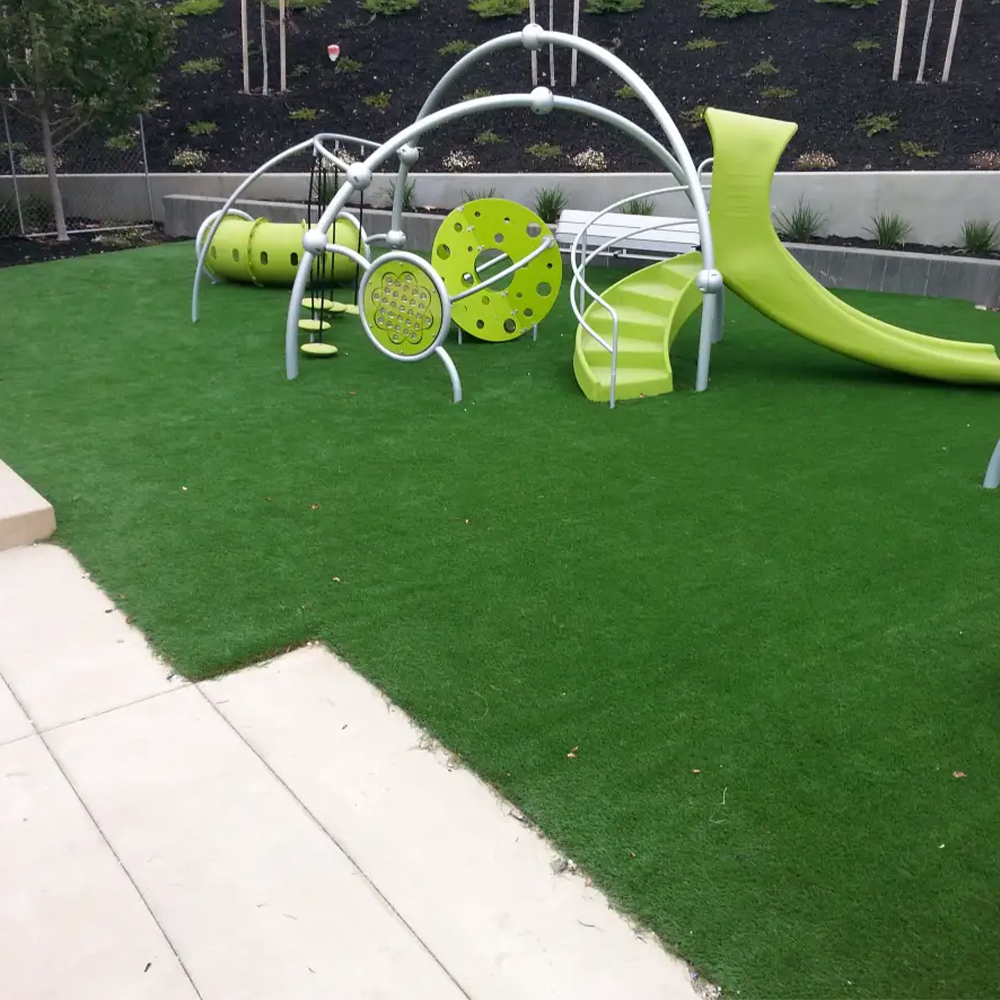Durable Arizona Artificial Turf for Residential and Business Applications
Durable Arizona Artificial Turf for Residential and Business Applications
Blog Article
Look Into the Environmental Perks of Opting for Artificial Lawn Solutions
The adoption of artificial turf services offers an engaging opportunity to resolve pushing ecological challenges. By dramatically reducing water usage and lessening the application of damaging chemicals, these choices not just promote lasting landscaping yet additionally safeguard regional ecological communities.
Water Preservation Advantages
One of the most significant advantages of fabricated lawn is its capacity to preserve water. In contrast, fabricated turf does not need watering, considerably minimizing the general need for water resources.
By eliminating the demand for routine watering, synthetic grass adds to sustainable landscape methods and helps minimize the environmental impact of excessive water intake. The preservation of water extends to the reduction of overflow, which can lead to soil disintegration and river contamination.
Additionally, the installation of synthetic turf enables communities and home owners to assign water resources a lot more successfully, concentrating on crucial usages such as alcohol consumption water and farming. The change towards synthetic grass not only promotes accountable water use yet also lines up with broader ecological goals targeted at preserving natural resources.
As neighborhoods increasingly focus on sustainability, the water preservation advantages of synthetic lawn provide a compelling situation for its fostering in property and industrial landscaping projects.
Lowered Chemical Use
The transition to synthetic grass considerably lowers the reliance on chemical therapies generally utilized in natural lawn upkeep. Traditional lawn management normally involves the application of fertilizers, herbicides, and pesticides to advertise growth and control insects. These chemicals can position threats to human wellness, local wildlife, and the environment, adding to dirt and water contamination.
On the other hand, fabricated grass removes the demand for these harmful substances. Once set up, it requires very little maintenance, largely containing routine cleansing and occasional infill replenishment. This decrease in chemical use not only benefits the instant environment yet also adds to broader eco-friendly security. By decreasing the release of artificial substances right into the ecosystem, man-made grass promotes healthier soil and water supply.
Additionally, the absence of chemical overflow related to synthetic grass installations aids safeguard neighborhood rivers from pollution, sustaining marine life and preserving biodiversity. Arizona turf. As neighborhoods increasingly focus on sustainable practices, choosing synthetic grass offers a sensible solution that straightens with ecological preservation goals. With this change, property proprietors can enjoy lush environment-friendly areas without endangering eco-friendly health, leading the way for a more sustainable future
Reduced Carbon Impact

Additionally, the setup of synthetic grass can cause considerable water conservation. All-natural yards require significant amounts of water for watering, which not only includes to the carbon impact connected with water extraction and therapy but likewise strains neighborhood water resources. On the other hand, fabricated lawn needs very little upkeep, calling for no watering, consequently substantially reducing water usage and its associated power prices.
Additionally, the longevity of synthetic grass adds to its decreased carbon influence. With a life-span of up to 15 years or even more, the demand for constant substitutes is diminished, causing less waste and lower energy usage in manufacturing and dealing with standard yard choices. On the whole, man-made lawn offers a lasting alternative for ecologically aware landscape design.
Environment Preservation
Environment conservation is a critical factor to consider in the discussion over landscape design choices, especially when comparing synthetic grass to natural lawn. Natural grass yards commonly need comprehensive maintenance, consisting of making use of plant foods, herbicides, and chemicals, which can detrimentally impact local ecosystems. These chemicals can leach right into the dirt and rivers, damaging indigenous flora and fauna and interfering with neighborhood habitats.
Synthetic turf gets rid of the demand for hazardous chemicals, thus safeguarding close-by wildlife and check this site out preserving the stability of surrounding communities. The installment of artificial turf can lead to the conversion of previous grass locations right into more biodiverse landscapes, such as pollinator yards or native plant locations, which can sustain neighborhood wildlife.
Inevitably, the shift to synthetic lawn not only conserves water and reduces maintenance initiatives but additionally cultivates an extra unified relationship between human tasks and the native environment, promoting habitat conservation while doing so.
Long-Term Sustainability
Long-lasting sustainability is a critical consider evaluating the benefits of synthetic grass over traditional grass lawns. One of the most substantial benefits of synthetic grass is check that its durability; it can last approximately 15-20 years with very little upkeep, whereas all-natural lawn needs constant reseeding and substitute. This long life reduces the demand for consistent resources, such as water, fertilizers, and pesticides, which are vital for maintaining a healthy turf yard.
Furthermore, synthetic grass adds to a decrease in carbon emissions related to lawn care tools. Typical yards commonly require gas-powered mowers, trimmers, and blowers, all of which add to air contamination. Arizona artificial turf. In contrast, synthetic grass eliminates the demand for such tools, advertising a cleaner environment
In addition, the production of synthetic grass increasingly makes use of recycled materials, improving its sustainability profile. As producers take on green practices, the environmental footprint of synthetic grass proceeds to diminish.

Final Thought
The fostering of synthetic grass services provides significant environmental advantages, consisting of considerable water preservation, reduced dependence on unsafe chemicals, and a reduced carbon footprint. Additionally, fabricated lawn help in preserving all-natural habitats by lessening land disruption and advertising long-lasting sustainability through the usage of sturdy products. Jointly, these aspects underscore the possibility of man-made grass to add favorably to ecological health and use a More Info feasible choice to conventional landscape design methods in a significantly resource-conscious world.
In comparison, synthetic turf does not need watering, significantly reducing the total need for water sources. By decreasing the launch of synthetic substances into the environment, fabricated grass promotes healthier dirt and water systems.
Additionally, the installation of synthetic grass can result in substantial water preservation. In comparison, synthetic turf needs marginal maintenance, calling for no watering, thus considerably reducing water use and its associated energy prices.

Report this page